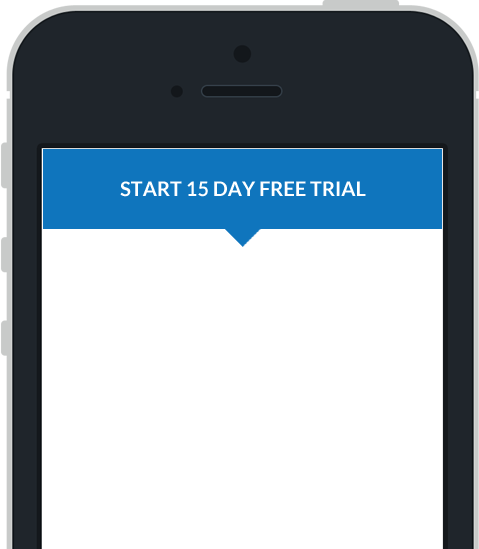This tutorial is for the new, online project designer. The tutorial for the Desktop Designer is available
here
.
Timeline Point
Learn how the Timeline point can be used and see it in action with the sample projects.
What is the Timeline point?
The Timeline point can be used to display a graphical timeline of activities that occur consecutively or concurrently. Using a Template point you can design a page of points that are used for each of the activities. This allows you to quickly and easily manage the points that are used in each activity.
Key Features
- Activities can be created and displayed on a timeline with an activity name and a duration.
- Activities can be re-ordered from within the mobile app by dragging activities up and down the timeline.
- Multiple display modes can be used to display either staggered or concurrent activities.
Configuration and Settings
Preparations
The Timeline point is an advanced point that uses a template page to present points for each entry in the grid. The template page is configured via a Template point and is explained in the following steps.
Preparing a template page
The first step is to add a Template point to the project. See the Template Point Tutorial to learn how to prepare a template page.
Adding required content to the template page
The template page will be used for each entry in the Timeline and requires two points:
-
One point to define the
Activity Namefor each activity -
One point to define the
Durationof the activity
For examples of which points and settings to use for the
Activity Name
and the
Duration
, please see the
Timeline point sample project
.
Preparing a content page
Once the template page has been created, create another page in the project which will contain the Timeline point and any other points that are not contained within the Timeline activities.
Start Time point
Add a Date/Time point to the content page. This point will be used to store the start time of the Timeline point.
Template point
Add a Template point to the content page. Edit the properties to select the template page that was created in the first step along with configuring how many times to insert the template into the project. This number determines how many activities will be available in the Timeline point.
Timeline Settings
Add a Timeline point to the content page and see below for the configuration options:

Style
Determines how the activities are displayed on the timeline;
- Concurrent: Activities will be displayed concurrently and will have the same start times.
- Staggered: Activities will be displayed consecutively and each activity will start at the previous activity's end time.
| Concurrent | Staggered |

|

|
Select point with start time
Select the Date/Time point that was created to store the start time.
Number of hours on timeline
Enter a number between 1 and 24. This will be the time limit for activites within the Timeline.
Show timeline navigation buttons
Displays a Next and Previous button on the timeline point that can be used to change the selected activity. This can be useful for using a Logic point to reference a Timeline point and toggle the visibility of other points based on the Timeline's selected activity.
Read only
When enabled, it will disable the ability to create, edit and delete activity entries from the Timeline.
Allow deleting entries
When enabled, it will allow the ability to delete activity entries from the Timeline.
Template Settings
The following settings are used to select the Template that will be used for each entry. Each entry
requires a point to define the
Activity
for the entry and another point for the
Duration
of the activity.

Select template point
Select the template point that was created in the preparation section .
Point for Activity
Select the point that was added to the template page as the
Activity Name
point.
Point for Duration
Select the point that was added to the template page as the
Duration
point.
Entry Page Settings
The following settings are used to customise the functionality that is available on the entry page, which is displayed when selecting or creating a new entry in the session.

Show navigation buttons
Displays a Next and Previous button on the entry page for each activity. These buttons can be used to navigate between the activities from within an entry.
Show create entry button
Displays a New Activity button on each activity entry page. This button can be used to create a new activity from with an existing activity's entry page.
Sample Projects
This sample demonstrates how a Timeline point can be used to to create activities and display them on a graphical timeline.
Sample Projects
